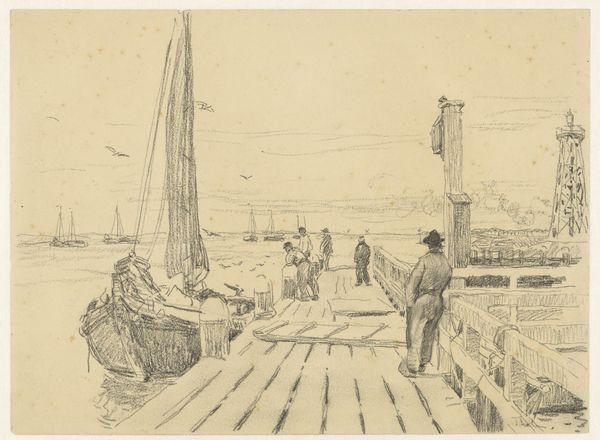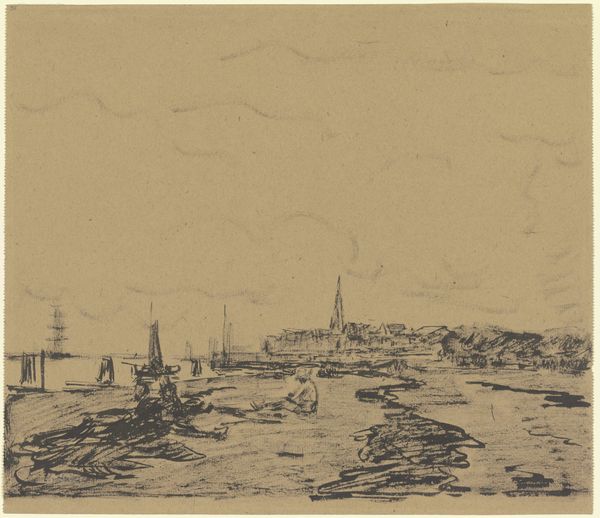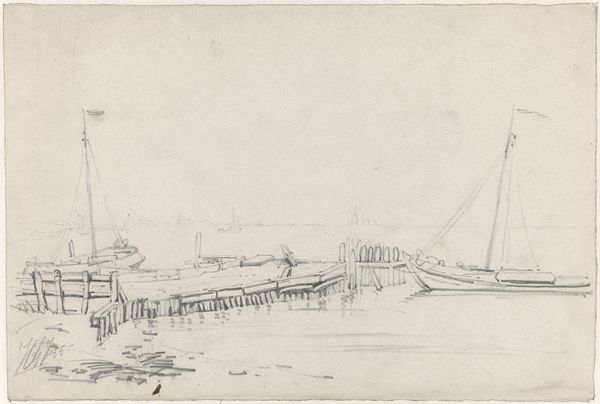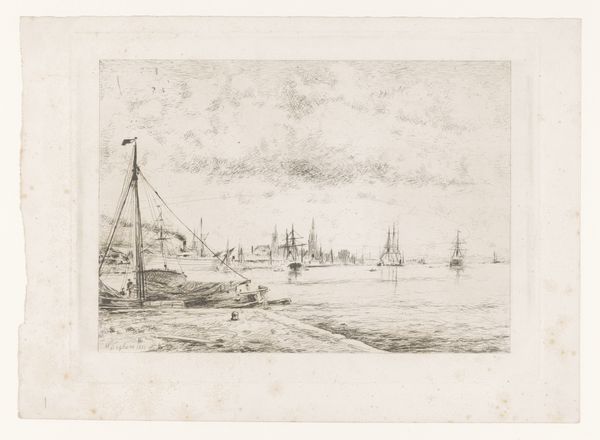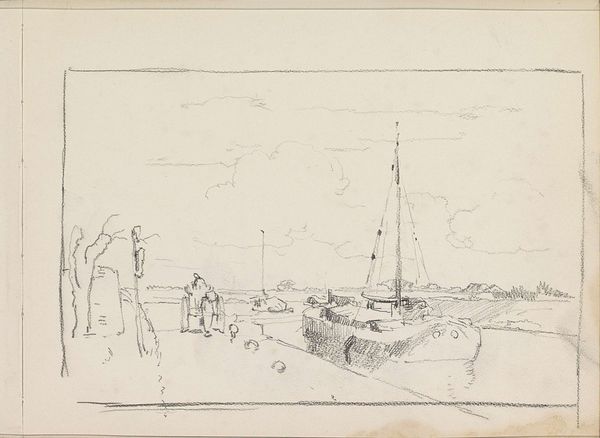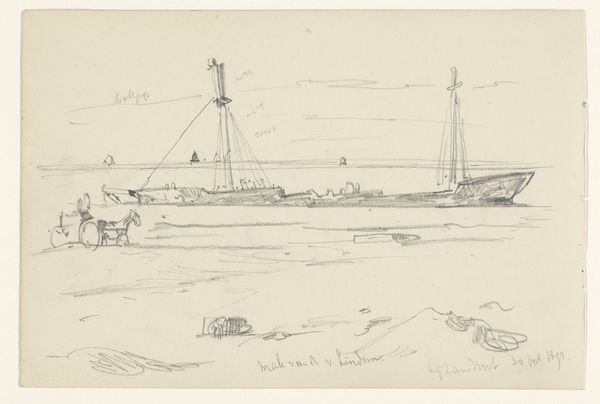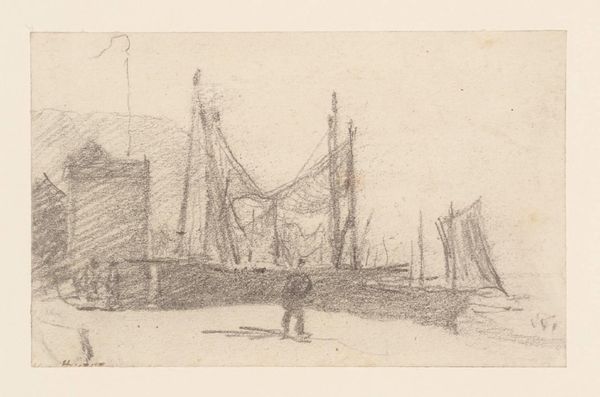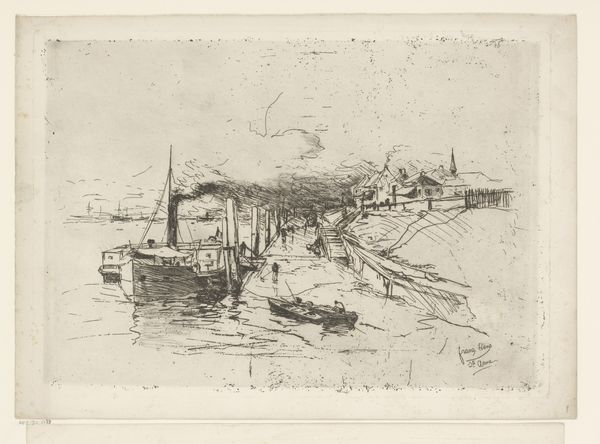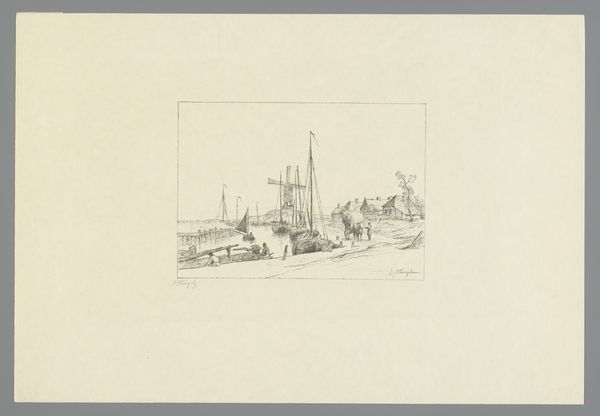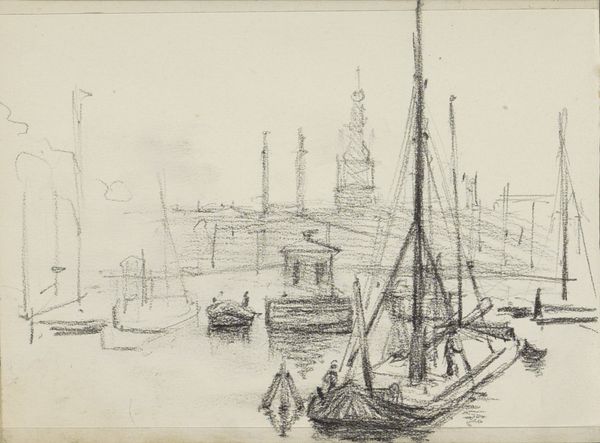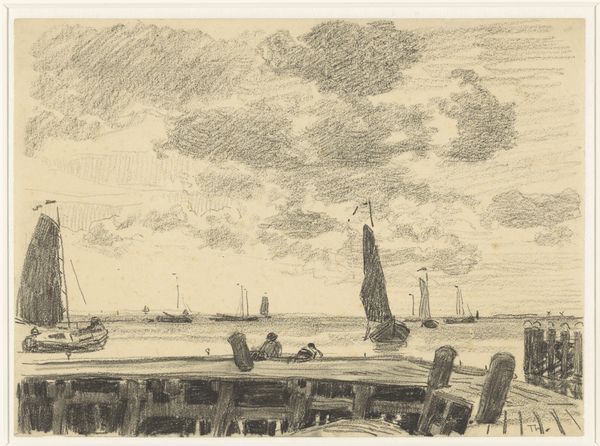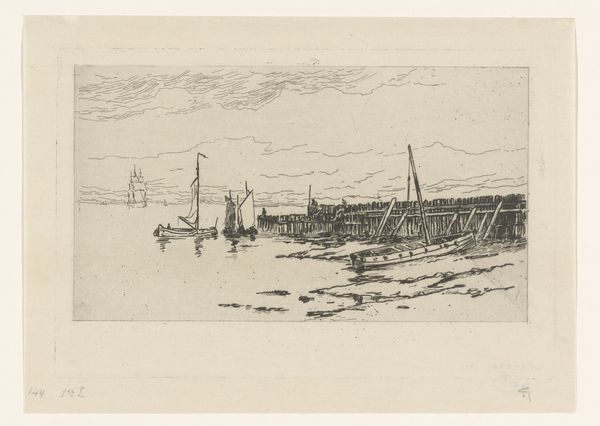
Dimensions: height 225 mm, width 308 mm
Copyright: Rijks Museum: Open Domain
Curator: This drawing is by Willem Bastiaan Tholen, entitled "Twee botters aan de steiger", or "Two Botters at the Quay" dated roughly between 1870 and 1931. Editor: It has such an ephemeral quality; it almost feels like a fleeting memory captured in pencil and ink. The starkness, especially with the sparseness of detail, lends it a real immediacy. Curator: Indeed. Tholen, positioned during the later Dutch Impressionism, captured maritime scenes such as this that really spoke to the national identity of the Netherlands and its relationship to the sea. Botters, those flat-bottomed boats, became almost emblematic of Dutch fishing culture. The Rijksmuseum is fortunate to hold this glimpse of Dutch maritime heritage in its collection. Editor: For me, it's also about labor. Look closely, and you can see figures struggling with equipment on the docks, emphasizing the hard work intertwined with this idealized vision of nautical life. I wonder about the artist's choice to leave certain aspects unfinished. What does this suggest about the value of work and craft? Curator: I see it as the deliberate invoking of movement; Impressionism strove to capture light and motion rather than photographic accuracy. The sketch-like quality almost becomes performative, reminding us of the fleeting moments Impressionists sought to memorialize. It aligns the artist's work to a longer cultural history of depicting labor in painting, moving the Dutch masters toward a modern art. Editor: Yes, it brings questions of artistry and utility into dialogue; is this 'fine art', documentation of labor, or something in between? Perhaps that question becomes the statement. Curator: Certainly the ambiguity enhances the piece, rendering it as an accessible image into a broader set of themes. Editor: Exactly, so as we leave this image, it resonates with me because of how much it hints at, both in process and production. Curator: And I hope visitors appreciate Tholen’s way of invoking not only place but an era, offering perspectives on society and identity in the Netherlands through such careful observation.
Comments
No comments
Be the first to comment and join the conversation on the ultimate creative platform.
